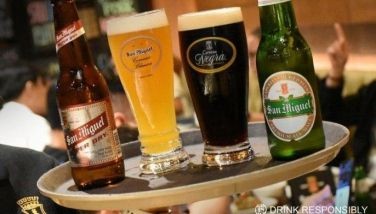200th/5th
There are several number acronyms that have become part of our everyday life. Most popular would be 24/7 which means that it is happening all the time, 24 hours a day and 7 days a week. Then we had the 9/11 to mark the event of the terrorist attack of the Twin Towers of New York. Many couples were married last Oct. 10, 2010 because they feel lucky if their altar date was scheduled on 10/10/10. For the underprivileged, the 5/6 lending rate (you borrow five, you pay six) keeps them forever in debt and the lender richer if the loans are paid.
For the 2010 Oktoberfest, it is the number acronym 200/5. It has been 200 years since Crown Prince Ludwig of Bavaria married Therese and it is the fifth year for Marco Polo Plaza (phone 253-1111, www.marcopoloplazacebu.com) to celebrate this cherished tradition. Perhaps it should be 200/5/5/0 because your favourite food columnist has always been present in all these festivities at the Marco Polo and zero because I have never been to Munich unlike my media colleague Jaime Picornell who has been there in 1980. Today, pilgrimage to the Oktoberfest would be expensive as the price of a liter of beer served in Oktoberfest beer mugs (1-litre-Steins or Maßkrug) cost about 8.5 euros or 467 pesos and no smoking pa gyud in all pubs, cafes and beer tents in the autonomous state of Bavaria.
At the 2010 Marco Polo Bavarian Foodfest, Marco Polo GM Hans Hauri, German Consul Dr. Franz Seidenschwarz and Guest Chef Dietmar Dietrich opened the festivity with the slicing of the German Ham encased in bread dough and the Leberkäse Meat Loaf. Because it is Oktoberfest, beer was the standard refreshing drink served to all the guests.
For appetizers, I tried the freshly baked pretzels, Allgau Cheese Cake with Ham and the Forest Ham with Cantaloupe Melon. If I ate these delicious spread in Bavaria, the price tag would easily be 30 € (1,740 pesos). Perhaps Food/Beverage Director Stefan Wieprich who hails from Bavaria can confirm this.
As usual, I opted for small servings of each of the main dishes like Ham and Noodles Gratin, Königsberger Klopse in Caper Cream Sauce, Kasseler with Apple-Marjoram Sauce (smoked and salted cuts of pork) and the Bavarian Meat Trio (Roast Pork Knuckles, Baked Ham in Bread Dough and Leberkäse Meat Loaf) and some sauerkraut. The latter or “sour cabbage” is made from finely shredded cabbage which has been fermented by lactic acid bacteria. Its distinctive sour taste is definitely an acquired taste, like Kimchi.
I avoided the Wursts (sausages) this time because it was too filling for my, excuse me, dietary requirements. I found the taste of the Königsberger Klopse very tasty and had a second serving. This dish, one of the glories of East Prussian cuisine, is made with meatballs and the white sauce with capers enhances the luxuriant flavor of the meat.
For dessert, the following choices were available: Schwarzwalder Kirschtorte (Black forest cherry cake), Almond Cake, Prinzregenten Tart, Bee Sting cake and Apple Pie. Very difficult gyud the life of a food columnist to make choices and the slices of the cakes were too generous. Half slice of each cake na lang and my favorites were the Cherry and Almond cakes.
By the time this article reaches my beloved readers, it is November and the Culinary Journeys of Marco Polo Plaza will bring to Cebu the 2010 Beaujolais Nouveau.
- Latest
- Trending


















